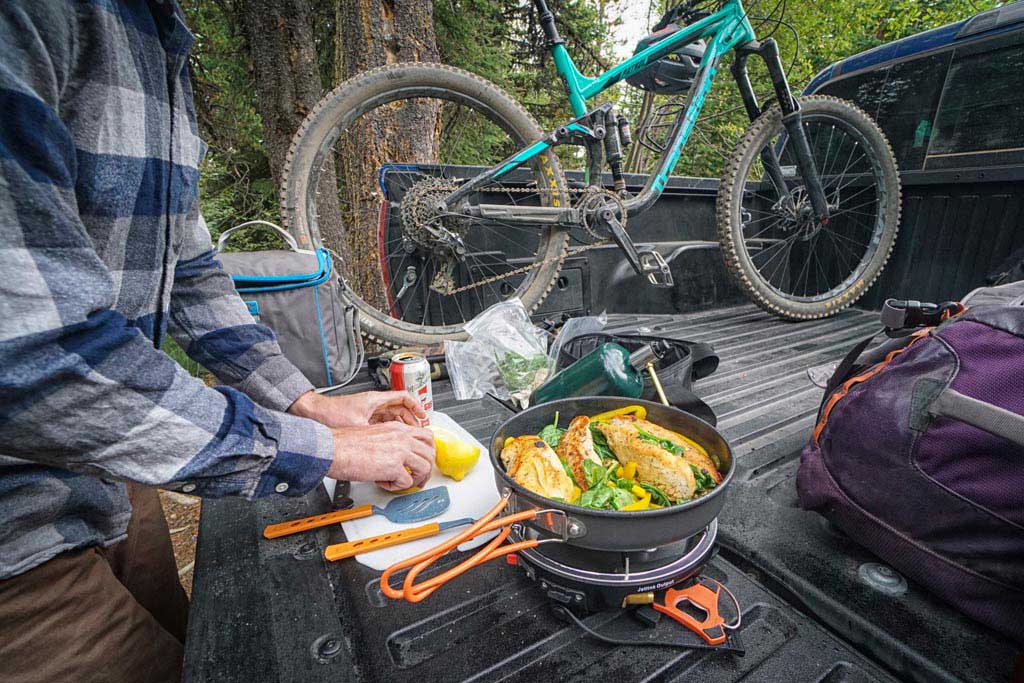Butane vs Propane Stove: Why Not Both?

Fuel Matters
Whether you’re pushing through snow to a mountain peak, crossing a sweltering desert, or trekking somewhere in-between, you need to stay energized with good grub, cooked with a fuel that fits your needs.
But how do you choose the right backpacking stove fuel? Isobutane vs. propane is the usual debate, with each having advantages depending on the trip ahead of you, the type of backpacking stove you use, and how you choose to address each fuel’s unique properties.
So let’s break down each fuel type.
Propane
Propane is one of the most widely used fuels, and for good reason. Propane works well in adverse conditions, continuing to power your stove at high altitudes and on cold-weather excursions (functioning down to around -43 degrees Fahrenheit). That makes propane an effective fuel for any season and location.
So what’s the downside?
Weight, primarily. Propane is stored in canisters at a higher pressure than other fuels, which makes your canisters heavier. On shorter excursions, that isn’t a problem, but when you’re carrying everything on your back for days on end, it can become one.
Still, there are ways to counteract the extra weight. Traveling in a group, for example, is a great way to spread the heavier canisters across you and your fellow backpackers. Including more people on the trip also opens up the opportunity to bring a basecamp system, which can save you pack weight overall through more efficient group cooking.
Isobutane
Isobutane has two distinct advantages over propane.
First, isobutane canisters are lighter, making it easier to carry long distances. And second, isobutane actually has more energy packed into it by volume, enabling you to cook longer with less fuel. (That being said, you should still always remember to check the fuel levels in your canisters before hitting the trail. Nobody wants to begin an adventure with near-empty canisters!)
Isobutane does, however, have one disadvantage. While it’s light and packed with energy, it doesn’t work as well as propane at high altitudes and doesn’t function well below 14 degrees Fahrenheit. That can become a problem in extreme-cold conditions.
But just as there are ways to mitigate the weight of propane, there are ways to minimize isobutane’s performance issues in the cold. First, you can buy a regulated stove, such as one of our precision cook systems, which are built to more effectively produce a steady, consistent flame, even in adverse temperatures.
Propane and Isobutane: The Best of Both Worlds?
You can also choose to blend isobutane with propane through our Jetpower Fuel. The result is a high-performing blend that combines cold-weather performance with energy efficiency and pressure consistency throughout the life of your canister.
Fuel up for your next adventure.
So which is the better backpacking stove fuel for your next adventure? Is it the cold-weather performance of propane, the light, energy-packed properties of isobutane, or a mixture of both? Whatever your next adventure, be sure to fuel up at your local outdoor gear store.